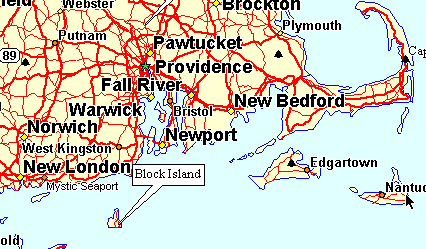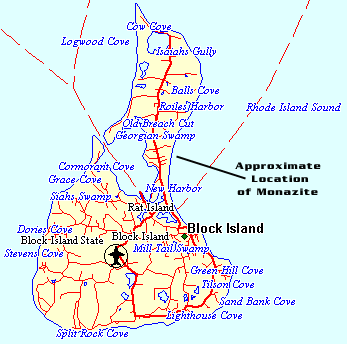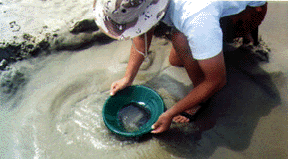As early as 1891 the granites exposed around Westerly and Narragallsett Pier, Washington County, were shown by Derby (1891a, p. 205; AM. Naturalist, 1892) to be monazite bearing. The rock at Westerly was said to be especially rich in monazite. Later reports by Kemp (1899, p. 368), Loughlin (1912, p. 127) and Quinn, Jaffe Smith, and Waring (1957, p. 549) repeated Derby's observation and extended the known presence of monazite in the rocks of the Narragansett Bay area to scattered occurrences in pegmatite dikes that cut across the granite at Westerly. Monazite was reported to occur in granite exposed at the Redstone quarry near Westerly in the Ashaway quadrangle (Jaffe and others, 1959, p. 102). At this locality the monazite is accompanied by bastnaesite and uranoan thorianite, but allanite is absent. The abundances of the accessory minerals in the granite at the Redstone quarry were estimated by Smith and Cisney (1956, p. 80) as percentages of the whole rock:
| Mineral | Percent |
| Magnetite and ilmenite | 0.13 |
| Apatite | 0.05 |
| Bastnaesite | 0.02 |
| Pyrite | 0.005 |
| Monazite | 0.002 |
| Sphene | 0.001 |
| Zircon | 0.001 |
| Uranoan thorianite | 0.001 |
Although allanite was not noted at Redstone quarry, it accompanies monazite in the granite exposed at Narragansett Pier. This granite was said to be equivalent to that in the Redstone quarry near Westerly ((Quinn and others, 1957, p. 549).
A dike of granodioritic phase of the Westerly Granite exposed at Bradford, Washington County, contains minor accessory monazite with common accessory allanite, apatite, magnetite, sphere, and zircon (Hall and Eckelmann, 1961, p. 628).
SEDIMENTARY DEPOSITS
Beach sand on the south shore of Block Island, Newport County, in the vicinity of New Shoreham was reported to contain accessory detrital monazite, sillimanite, and zircon (Fisher and Doll, 1927, p. 433). Monazite is present in sedimentary deposits on the Continental Shelf in the Atlantic from Block Island to the 100-fathom line (Alexander, A. E., 1934, p. 13).


We stopped at Fred Benson Town Beach. Here we noticed an elevated background count. The source turned out to be a thin layer of black sand that was concentrated near the seaward-facing dunes.


